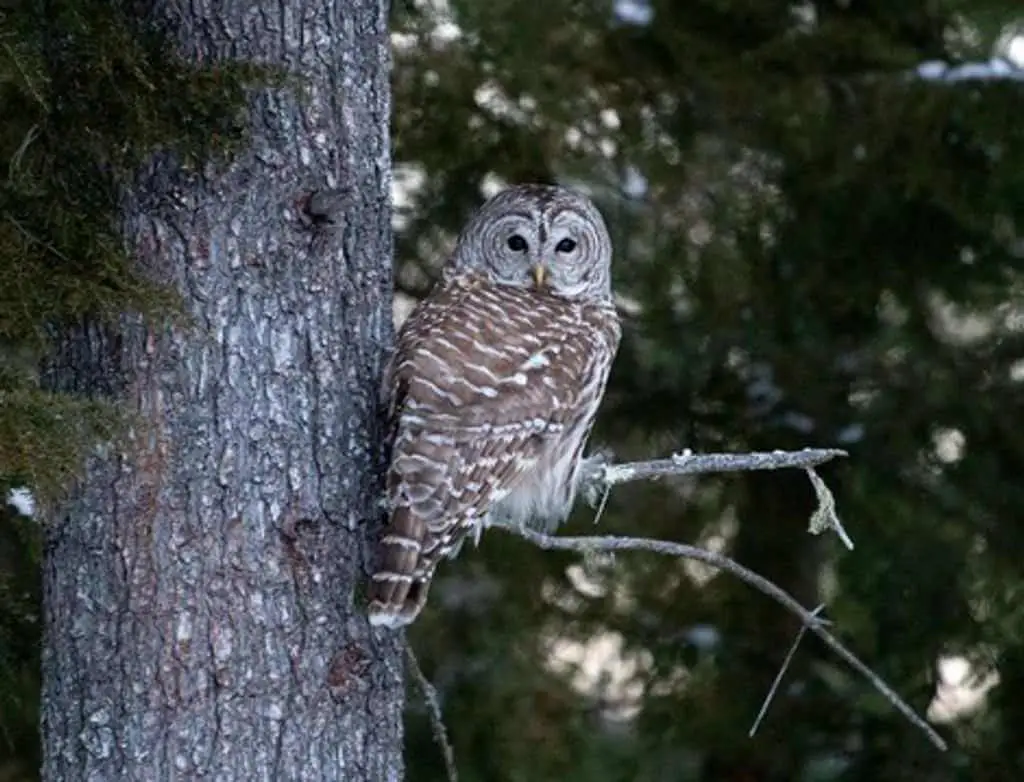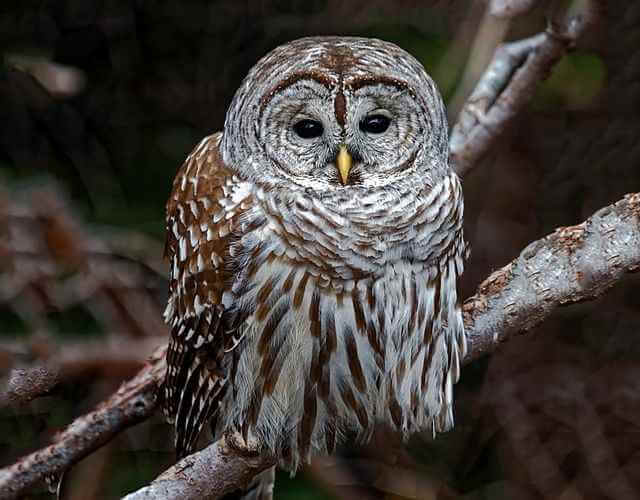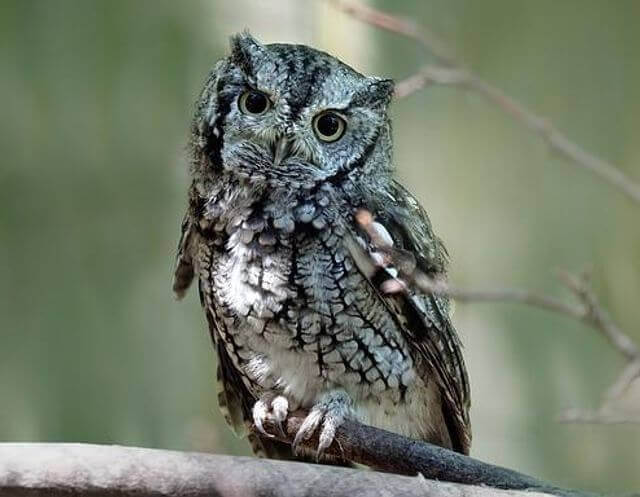Embark on a nocturnal journey through Wisconsin’s diverse landscapes with our ultimate guide to the 12 types of owls! From the majestic Great Horned Owl to the elusive Northern Saw-whet Owl, Wisconsin’s forests, fields, and wetlands provide a habitat for a diverse array of these captivating birds of prey.
In this comprehensive guide, we’ll explore the unique characteristics, habitats, and behaviors of each owl species, offering valuable insights for bird enthusiasts and nature lovers alike.
Table of Contents
Types of Owls in Wisconsin
Barred Owl
- Length: 16.8-19.8 in (43-50 cm)
- Weight: 16.5-37.0 oz (470-1050 g)
- Wingspan: 39.0-44.0 in (100-110 cm)
- Scientific Name: Strix varia
- Frequency of Occurrence: 1.95% (Statistic by: eBird)
- Where To Find Them: Some places where you can see barred owls include the Horicon Marsh National Wildlife Refuge, the Kettle Moraine State Forest, and the Nicolet National Forest.
- How to Attract: To attract barred owls, start by providing a tall perch for them to sit on. A dead tree or large post will work well. You can also provide a dense thicket of trees and shrubs for them to hide in, as well as a water source. In addition to creating the right habitat, you can also attract barred owls with food. They love small mammals such as mice, rats, and rabbits, as well as birds, amphibians, and reptiles. You can offer them food in the form of live prey or dead animals placed near their perch or hiding spot.
General Information:
The Barred owl is a large owl in North America that ranges from southern Canada to northern Mexico. The barred owl prefers dense forests, but can also be found in open areas like agricultural land and parks.
These owls eat small mammals, such as rodents, rabbits, and bats. They also eat amphibians, birds, reptiles, and insects. Barred owls nest in tree cavities or abandoned buildings. They lay 2-4 eggs and the chicks hatch about 30 days later.
Great Horned Owl
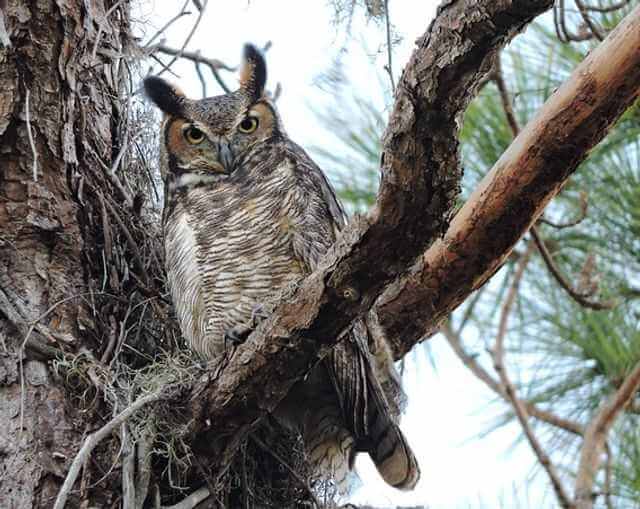
- Length: 18.1-24.8 in (46-63 cm)
- Weight: 32.1-88.2 oz (910-2500 g)
- Wingspan: 39.8-57.1 in (101-145 cm)
- Scientific Name: Bubo virginianus
- Frequency of Occurrence: 1.83%
- Where To Find Them: Some good places to see these owls include Apostle Islands National Lakeshore, Chequamegon-Nicolet National Forest, and Horicon Marsh National Wildlife Refuge.
- How to Attract: Great-horned owls can be attracted to an area by providing a food source for them. This could include putting out live prey items such as mice or rats, or by placing owl pellets in an open area so that the owls can access them. Additionally, areas with tall trees or other features that provide good nesting sites may also attract great-horned owls.
General Information:
The Great-horned owl is one of the most widespread raptors in North America. It ranges from central Alaska to southernmost Texas and from the Atlantic coast to the Pacific. The great-horned owl occupies a wide variety of habitats, including dense forests, open woodlands, agricultural areas, and urban areas. In winter, they may be found in desert scrublands and even on bare mountain ridges.
The diet of the great-horned owl is very diverse and includes small mammals (such as rabbits, rats, and mice), large mammals (such as deer, elk, and coyotes), birds (including other raptors), amphibians, reptiles, fish, and invertebrates.
Related Post: 35 Fun Facts About The Great Horned Owl (Detailed)
Snowy Owl
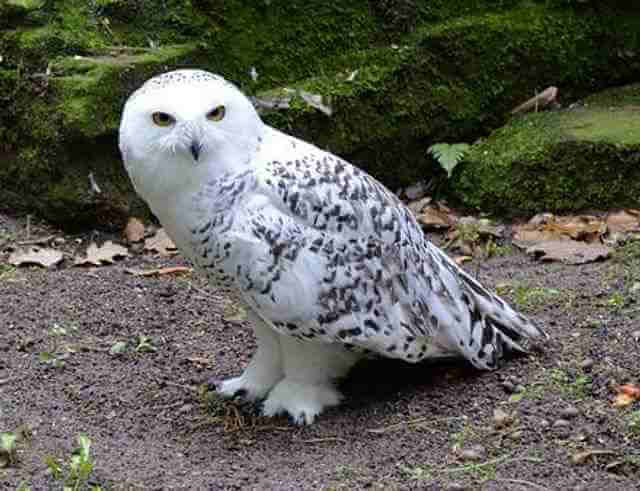
- Length: 20.5-27.9 in (52-71 cm)
- Weight: 56.4-104.1 oz (1600-2950 g)
- Wingspan: 49.6-57.1 in (126-145 cm)
- Scientific Name: Bubo scandiacus
- Frequency of Occurrence: 0.5541%
- Where To Find Them: Some of the best places to see them are along the Wisconsin River and in Door County. They can also be seen near airports and other areas where there is open grassland.
- How to Attract: First, provide a food source. Snowy Owls will eat small mammals, such as mice and rats, as well as birds, insects, and reptiles. You can offer them a variety of foods by putting out live or dead animals (either pre-killed or frozen), bird feeders filled with seed or suet, or reptile feeders with live mice or rats. Second, create a perch for the owls. Snowy Owls like to perched in trees or on high posts where they can sit and watch for prey. If you have a tall tree in your yard, that’s great!
General Information:
Snowy owls are the most northerly owl in North America. They can be found in tundra habitats in the Arctic and subarctic regions of Canada, Alaska, and Russia. In winter, snowy owls may also be seen in open country and agricultural areas as far south as the Midwest and Northeast United States, as well as in coastal British Columbia and California.
Snowy owls use a variety of habitats during different times of year, but they prefer open country with scattered trees or rocks for perching. During the breeding season, they build their nests on the ground near cliffs, rocky outcrops, or other elevated sites. Snowy owls eat small mammals such as lemmings and voles, as well as birds. Snowy Owls build their nests on the ground, often in sheltered locations such as dunes or cliffs.
Related Post: 48 Fun Facts About Snowy Owls (with Photos, ID & Info)
Eastern Screech Owl
- Length: 6.3-9.8 in (16-25 cm)
- Weight: 4.3-8.6 oz (121-244 g)
- Wingspan: 18.9-24.0 in (48-61 cm)
- Scientific Name: Megascops asio
- Frequency of Occurrence: 0.3831%
- Where To Find Them: One of the best places to see them is at the Horicon Marsh National Wildlife Refuge. They can also be found in the Nicolet National Forest, Kettle Moraine State Forest, and other areas around the state. Eastern screech owls are usually active during the day and can be seen perched on trees or hunting for prey.
- How to Attract: There are many different ways to attract Eastern Screech Owls. One way is to put up a nest box in an appropriate spot. The owls like areas that have plenty of trees for them to roost in and hunt from, and are close to open areas where they can see their prey. They also need a water source nearby. Another way to attract Eastern Screech Owls is by putting out food for them. They love mice, rats, and other small animals, but will also eat insects, fruit, and other items. You can purchase food specifically made for owls, or you can put out live prey or frozen rodents. If you provide a good habitat and enough food, the owls will likely move in and start using your property as their home.
General Information:
Eastern screech owls are found in the eastern half of the United States and Canada. They live in a variety of habitats, including deciduous forests, mixed woods, and wooded suburbs. These owls eat mainly small mammals, such as mice, voles, and rats, but they will also take birds, reptiles, and amphibians.
Eastern screech owls nest in tree cavities; the female lays 2-6 eggs and incubates them for about 28 days. The young owls fledge (leave the nest) at about 8 weeks old.
Short-eared Owl
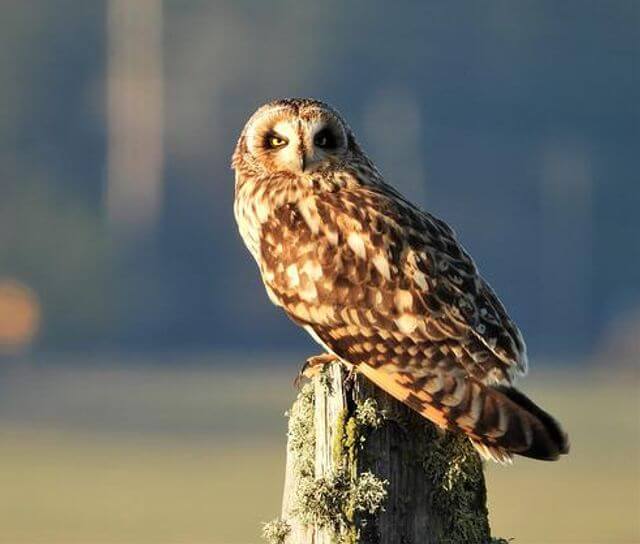
- Length: 13.4-16.9 in (34-43 cm)
- Weight: 7.3-16.8 oz (206-475 g)
- Wingspan: 33.5-40.5 in (85-103 cm)
- Scientific Name: Asio flammeus
- Frequency of Occurrence: 0.2115%
- Where To Find Them: In Wisconsin, they can be seen in locations including the Horicon Marsh National Wildlife Refuge, the Lower Wisconsin Riverway, and the Kettle Moraine State Forest.
- How to Attract: There are several things you can do to attract these owls to your property. One way to attract short-eared owls is to provide them with a perch. A perch can be anything from a tall tree to a wooden post. Make sure the perch is in an open area where the owls will have a clear view of their surroundings. Another way to attract these owls is by providing them with food. You can do this by putting out food for other animals, such as mice or rabbits. The short-eared owl will often eat these animals, which will bring them closer to your property.
General Information:
The Short-eared owl is a medium-sized owl that ranges in length from 13.5 to 17″ inches and has a wingspan of 33.5 to 40.5″ inches. This owl is found in open areas throughout North America, Europe, and Asia. The short-eared owl’s primary habitat is grasslands, prairies, and tundra, but it can also be found in marshes, meadows, and agricultural fields.
This owl feeds mainly on small rodents such as voles, mice, and rats, but it will also eat birds, insects, and other small invertebrates. The short-eared owl nests on the ground in open areas such as meadows or prairies.
Northern Saw-whet Owl
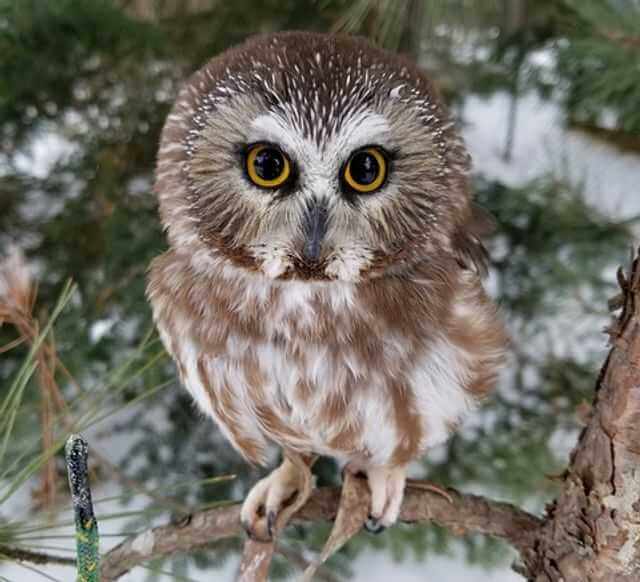
- Length: 7.1-8.3 in (18-21 cm)
- Weight: 2.3-5.3 oz (65-151 g)
- Wingspan: 16.5-18.9 in (42-48 cm)
- Scientific Name: Aegolius acadicus
- Frequency of Occurrence: 0.1363%
- Where To Find Them: Some good places to see them in Wisconsin include Chequamegon-Nicolet National Forest, Point Beach State Forest, and Copper Culture State Park.
- How to Attract: They can be attracted to your yard by putting up a nest box and placing a few logs in your garden for them to perch on. You can also attract these owls by putting out food such as live mice or rats, or by scattering dead mice around your yard.
General Information:
The Northern Saw-whet Owl is the smallest North American owl. Northern Saw-whet Owls are found in Canada, the United States, and Mexico. In the United States, they are found in every state except for Hawaii. Northern Saw-whet Owls live in many different habitats including forests, woodlands, grasslands, and agricultural areas.
They eat small rodents such as mice, voles, and rats. They also eat insects and other invertebrates. Northern Saw-whet Owls nest in tree cavities or old nests made by other animals.
Long-eared Owl
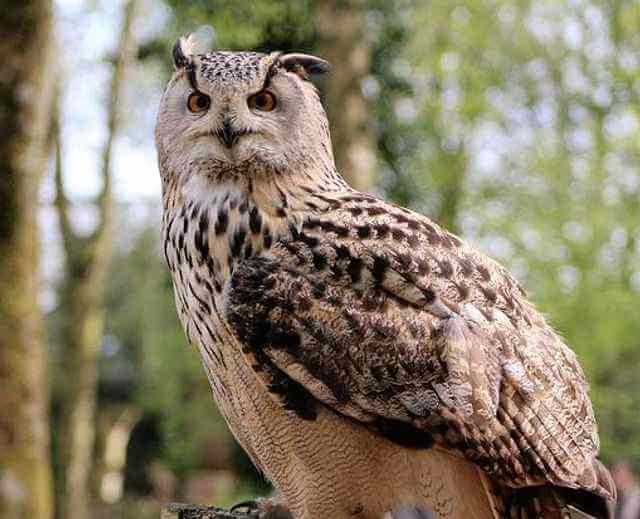
- Length: 13.8-15.8 in (35-40 cm)
- Weight: 7.8-15.3 oz (220-435 g)
- Wingspan: 35.4-39.4 in (90-100 cm)
- Scientific Name: Asio otus
- Frequency of Occurrence: 0.0478%
- Where To Find Them: Some of the best places to see this owl in Wisconsin are the Chequamegon-Nicolet National Forest, the Horicon Marsh National Wildlife Refuge, and the Lower Wisconsin Riverway.
- How to Attract: One of the best ways to attract long-eared owls is to provide a suitable habitat for them. This includes providing a large area of forest or woodland with plenty of dense vegetation for them to live in. You can also provide some open areas with scattered trees for them to hunt in. If you live in an area where long-eared owls are present, you can also try to attract them by putting up a nest box.
General Information:
The Long-eared owl is a medium-sized owl that is found in North America, Europe, and Asia. They are typically found in open habitats such as fields, meadows, and marshes. They eat a variety of small mammals such as mice, voles, and rabbits.
They also eat insects and other small invertebrates. They construct their nests on the ground or in trees. The female lays 4-6 eggs which are incubated by the male for about 26 days. The young owls fledge when they are about 5 weeks old.
Northern Hawk Owl
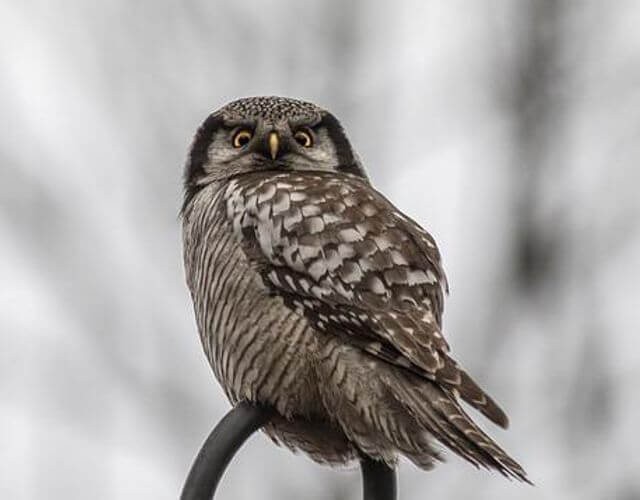
- Length: 14.2-17.7 in (36-45 cm)
- Weight: 8.5-16.0 oz (240-454 g)
- Wingspan: 27.9 in (71 cm)
- Scientific Name: Surnia ulula
- Frequency of Occurrence: 0.0255%
- Where To Find Them: Some good locations to see these owls include Apostle Islands National Lakeshore, Chequamegon-Nicolet National Forest, and Horicon Marsh Wildlife Area.
- How to Attract: The Northern Hawk Owl is not a common owl to see, but there are ways to attract them to your backyard. One way to attract these owls is to provide a roosting area. This can be done by putting up a large tree stump or building a nest box specifically for Northern Hawk Owls. You can also provide an area for them to hunt by leaving areas of the yard uncut and adding perches such as logs or branches. Finally, make sure you have a good water source available for the owls.
General Information:
The Northern Hawk Owl is a medium-sized owl found in the forests of North America and Eurasia. This species is believed to be the only hawk owl found in North America, where it ranges across the boreal forests from Alaska to Newfoundland and south to California and New Mexico. The Northern Hawk Owl is also found in Europe and Asia. These owls inhabit coniferous or mixed woods near open areas, such as meadows or prairies.
They are usually solitary but may form small flocks during the winter. Northern Hawk Owls are diurnal, meaning they are active during the day. They prey on a variety of small mammals such as rabbits, squirrels, rats, and mice. They also eat birds, including ducks, grouse, and passerines.
Great Gray Owl
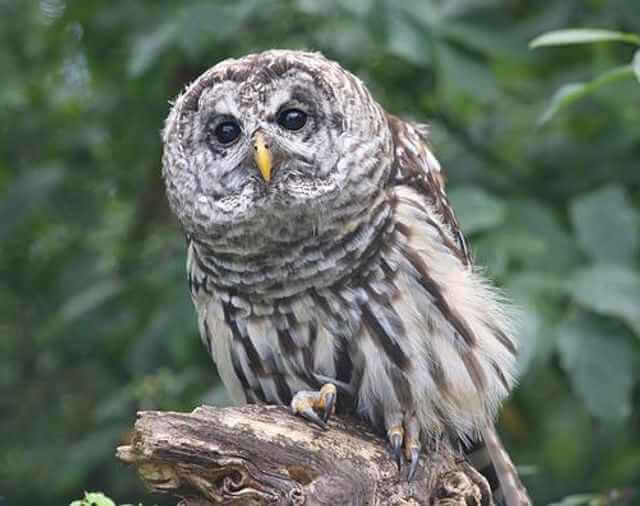
- Length: 24.0-33.1 in (61-84 cm)
- Weight: 24.7-60.0 oz (700-1700 g)
- Wingspan: 53.9-60.2 in (137-153 cm)
- Scientific Name: Strix nebulosa
- Frequency of Occurrence: 0.0157%
- Where To Find Them: Some good locations to see this owl in Wisconsin include the Nicolet National Forest, Chequamegon-Nicolet National Forest, and Horicon Marsh National Wildlife Refuge.
- How to Attract: To attract a Great Gray Owl, you’ll need to provide a large area with dense trees for cover and plenty of rodents for food. The owl will also need an open area for hunting. You can create an attractant area by clearing a section of woods and planting tall grass or other vegetation to provide cover. Be sure to place bird feeders and water sources near the attractant area to bring in other wildlife that will interest the owl.
General Information:
The Great Gray Owl is a large owl that ranges throughout North America and parts of Europe. They typically prefer coniferous forests and heavily wooded areas, but can also be found in open meadows and marshlands.
These owls feed primarily on small mammals such as mice, voles, and rabbits, but will also take birds, reptiles, and amphibians. Great Grays breed in the late winter or early spring, often building their nests in tree cavities or abandoned hawk or eagle nests.
Related Post: 53 Fun Facts About The Great Gray Owl (Photos, ID & Info)
Barn Owl
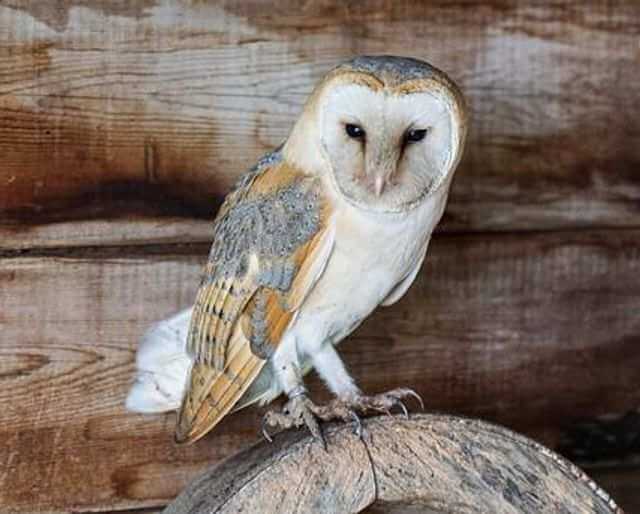
- Length: 12.6-15.8 in (32-40 cm)
- Weight: 14.1-24.7 oz (400-700 g)
- Wingspan: 39.4-49.2 in (100-125 cm)
- Scientific Name: Tyto alba
- Frequency of Occurrence: 0.0014%
- Where To Find Them: Some of the best places to see Barn Owls in Wisconsin include the Horicon Marsh National Wildlife Refuge, the Ice Age National Scenic Trail, the Kettle Moraine State Forest-Northern Unit, and Devils Lake State Park.
- How to Attract: One of the best ways to bring these birds in is to provide them with a nesting box. You can also install a perch near the nesting box, as barn owls like to roost in high places. You can also put up a bird feeder and fill it with mice, rats, or other small prey items. Finally, make sure you keep your yard free of predators, such as cats and dogs, as they may scare away the owls.
General Information:
Barn owls can be found throughout the world in open habitats such as fields, meadows, marshes, and deserts. They also inhabit forest edges and openings. Barn owls are usually not found in heavily wooded areas.
Barn owls are opportunistic predators and eat a variety of prey items that they can capture. Their diet includes small mammals (such as mice), birds, reptiles, amphibians, fish, and insects. Barn owls nest in cavities such as hollow trees, buildings, or barns.
Boreal Owl
- Length: 8.3-11.0 in (21-28 cm)
- Weight: 3.3-7.6 oz (93-215 g)
- Wingspan: 21.6-24.4 in (55-62 cm)
- Scientific Name: Aegolius funereus
- Frequency of Occurrence: 0.0013%
- Where To Find Them: In Wisconsin, they can be found in the northern forests near Lake Superior and in the Chequamegon-Nicolet National Forest.
- How to Attract: Boreal Owls can be attracted to your yard or garden by providing them with a place to roost and a food source. You can build a simple owl box to house the owl, or you can purchase an artificial owl box. The owl will also need a place to perch, such as a tree or large post. To attract owls to your property, you can also provide them with food. You can put out mice, rats, or other small prey items for the owls to eat.
General Information:
Boreal Owls are a medium-sized owl found in North America and Eurasia. In North America, they are found in boreal forests from Alaska to Newfoundland. They are also found in the Rocky Mountains and Great Lakes region. In Eurasia, they are found in boreal and temperate forests. Boreal Owls prefer dense forest with plenty of large trees for nesting and roosting.
They consume a variety of different animals that include mice, voles, and shrews. They also eat birds, insects, and other small prey. Boreal Owls nest in tree cavities or old nests made by other animals. The female lays 3-7 eggs, which she incubates for 28-30 days. The chicks fledge at about 4 weeks old.
Burrowing Owl
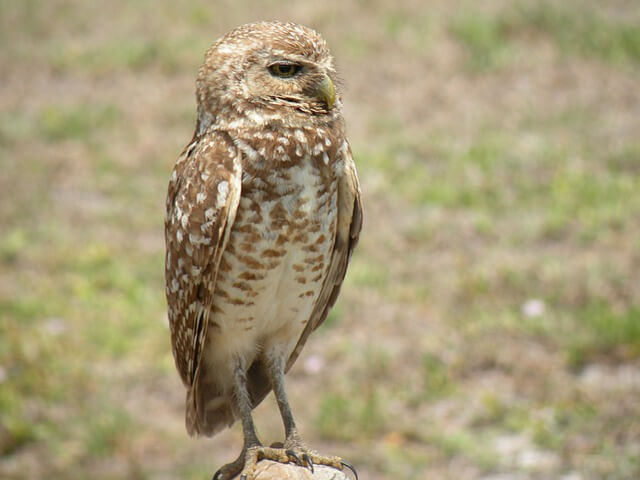
- Length: 7.5-9.8 in (19-25 cm)
- Weight: 5.3 oz (150 g)
- Wingspan: 21.6 in (55 cm)
- Scientific Name: Athene cunicularia
- Frequency of Occurrence: 0.0005%
- Where To Find Them: There are several locations in Wisconsin where you can see these interesting birds. One popular spot is the Horicon Marsh National Wildlife Refuge. Burrowing owls can be seen here from April through September. Another great place to see burrowing owls is on the campus of University of Wisconsin-Madison. This large university campus is located in the city of Madison and is home to a large population of these owls.
- How to Attract: To attract burrowing owls to your yard, you’ll need to provide them with a place to live. Burrowing owls typically live in abandoned animal burrows, so if you have an old hole on your property that’s no longer being used, you can offer it up as a home for these owls. If you don’t have an abandoned hole on your property, you can create one by digging out a section of soil about six inches deep and four feet wide. Be sure to leave a few inches of overhang around the edge of the hole so that the owls can perch comfortably.
General Information:
The Burrowing owl is a small, stocky owl that is found in open country throughout the United States and southern Canada. It gets its name from the fact that it often lives in holes dug by other animals, such as prairie dogs. Burrowing owls are most common in the Great Plains and California.
Burrowing owls eat a variety of small creatures, such as insects, rodents, and snakes. They also eat some birds, such as meadowlarks and sparrows. Burrowing owls nest in shallow holes in the ground, sometimes using abandoned animal dens or old buildings.
Related Post: Really Cool Burrowing Owl Facts That Will Amaze You!

